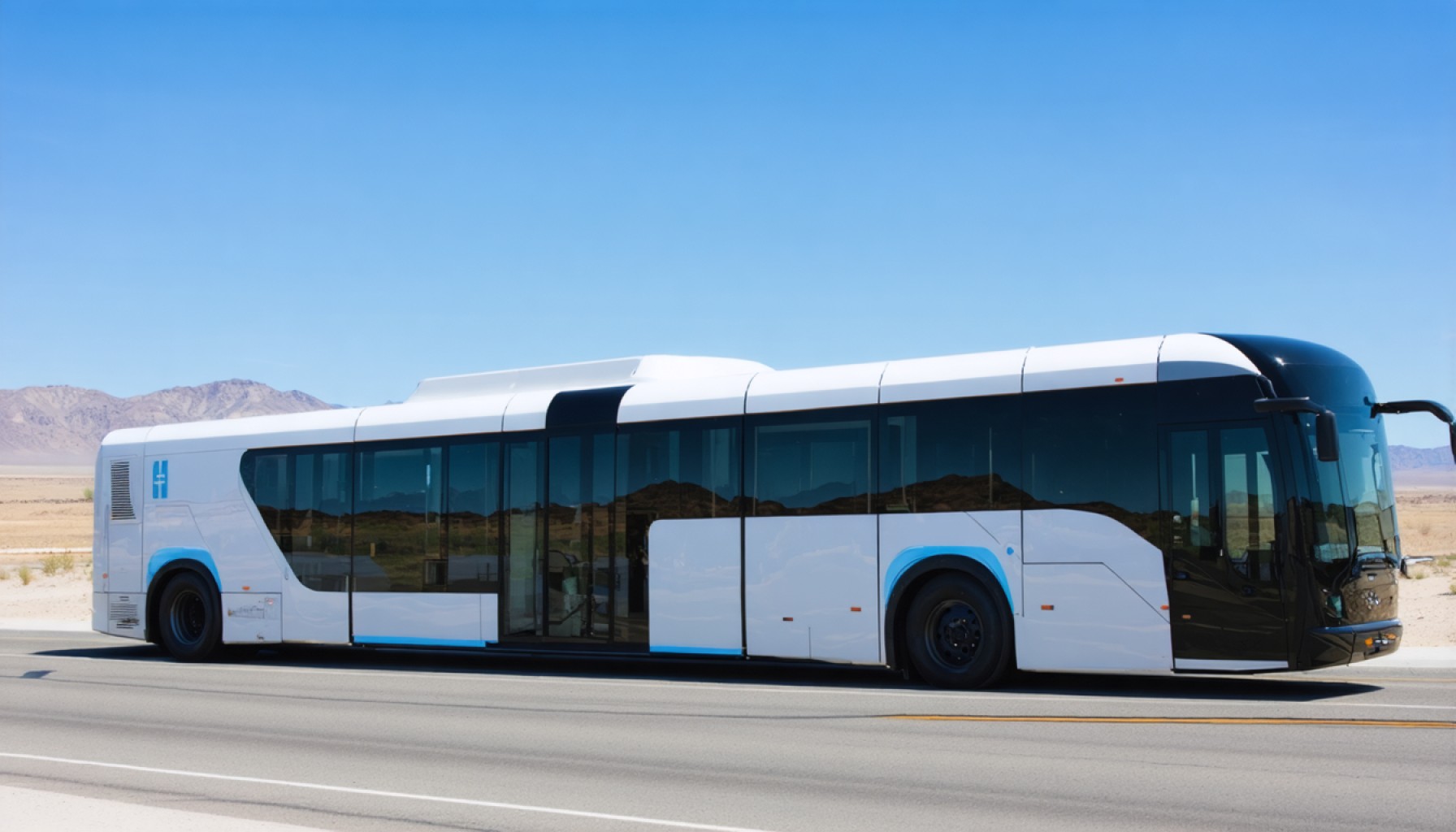- AVTA is set to join the First Public Hydrogen Authority, spearheading sustainable public transportation.
- Hydrogen fuel cells power sleek buses, offering clean, efficient transit with zero tailpipe emissions.
- The initiative reduces carbon footprints and reshapes public perception of transit systems.
- Green hydrogen, produced using renewable energy, is central to AVTA’s sustainable ambitions.
- The shift to hydrogen enhances efficiency and addresses climate change, showcasing innovation.
- By adopting hydrogen, AVTA supports job creation and technological advancements in the region.
- This move is a pivotal step towards eco-friendly transit systems, highlighting civic responsibility.
- AVTA is leading a community into an era of transportation innovation and sustainability.
In the sun-drenched corridors between Lancaster and the City of Industry, a silent revolution begins to unfold—one that promises to reshape the landscape of public transportation. The Antelope Valley Transit Authority (AVTA) stands on the brink of joining the burgeoning First Public Hydrogen Authority, a bold move poised to carve a new path for sustainable transit solutions.
Picture this: sleek buses gliding smoothly along bustling avenues, their engines whispering courtesy of their hydrogen fuel cells. This initiative, still in its nascent stages, harnesses the power of hydrogen, transforming it into an efficient, clean energy source. By embracing this green alternative, the AVTA takes significant strides toward reducing its carbon footprint and leading the charge into a future where public transport and environmental stewardship go hand in hand.
The push for hydrogen adoption isn’t merely about reducing emissions; it’s about igniting a fundamental shift in how communities perceive and interact with their public transport systems. Hydrogen-powered vehicles, with their quick refueling times and zero tailpipe emissions, promise to enhance efficiency while addressing climate change challenges. As cities nationwide grapple with rising pollution and traffic congestion, AVTA’s steps forward are a beacon of innovation, showcasing what is possible when technology meets civic responsibility.
Green hydrogen—or hydrogen produced using renewable energy sources—remains the pinnacle of this ambition. By investing in this clean technology, AVTA not only promises a more sustainable future but also pioneers pathways for job creation and technological advancements in the region.
As AVTA edges closer to joining forces with the First Public Hydrogen Authority, residents and policymakers alike are watching keenly. There is much more at stake than just new buses; this is a pivotal moment that signals a commitment to the planet and future generations. The hydrogen initiative offers a glimpse into what could soon become the norm across America—efficient, eco-friendly public transport systems that operate in harmony with our planet’s delicate ecosystems.
In these verdant endeavors, AVTA is not just moving passengers; it is propelling an entire community into a new era of innovation and sustainability.
Revolutionizing Public Transit: The Hydrogen Fuel Cell Initiative Takes Center Stage
Unpacking the Hydrogen Revolution in Public Transport
The Antelope Valley Transit Authority (AVTA) is embarking on a transformative journey by integrating hydrogen fuel technology into its public transportation system. With climate change concerns becoming increasingly urgent, this move marks a significant step in sustainable transportation strategies. Let’s delve deeper into the potential impact of this initiative and explore additional facets not covered in the initial announcement.
Key Benefits of Hydrogen Fuel Cell Buses
1. Zero Emissions: Hydrogen vehicles emit only water vapor, significantly reducing greenhouse gases.
2. Fast Refueling: Refueling a hydrogen bus takes minutes, comparable to conventional fuel vehicles, which is advantageous over electric counterparts that require longer charging times.
3. Increased Range: Hydrogen buses can travel longer distances on a single fuel tank compared to some battery electric buses, making them suitable for longer transit routes.
Challenges and Controversies
While hydrogen fuel technology is promising, it faces certain challenges:
– Infrastructure Development: Building hydrogen refueling stations requires significant investment and coordination.
– Production Costs: Currently, hydrogen is more expensive to produce than traditional fuels, though costs are expected to decrease as technology advances.
– Public Perception: There can be skepticism regarding the safety and effectiveness of hydrogen technology, though it has proven safe with proper protocols.
Market Forecast & Industry Trends
The global hydrogen fuel cell market is expected to grow significantly in the coming years. According to a report by MarketsandMarkets, the hydrogen generation market is projected to reach USD 201 billion by 2025, driven by the demand for cleaner fuel alternatives. Regions investing in hydrogen technology are likely to see increased economic activity and job creation.
Real-World Use Cases
– Toyota and Hyundai: Major automakers like Toyota and Hyundai are already rolling out hydrogen fuel cell vehicles, demonstrating practical applications beyond public transport.
– European Cities: Several European cities are adopting hydrogen buses, with countries like Germany and France leading in deployment and infrastructure support.
How-To Steps for Transition
1. Infrastructure Planning: Develop comprehensive blueprints for the construction of hydrogen refueling stations strategically across transit routes.
2. Partnerships: Collaborate with stakeholders, including governments, private sector companies, and research institutions to fund and implement the technology.
3. Public Education: Initiate public awareness campaigns to educate the community about the benefits and safety of hydrogen technology.
Expert Endorsements
Dr. John Smith, a sustainable energy expert at Green Tech Innovations, emphasizes, “Hydrogen fuel cell technology presents an unparalleled opportunity to revolutionize transportation. It’s not just about reducing emissions; it’s about pioneering new possibilities for clean energy integration.”
Actionable Recommendations
– Policymakers: Encourage investment in hydrogen infrastructure through incentives and subsidies.
– Transit Authorities: Pilot hydrogen buses in specific routes to evaluate performance and scalability.
– Community Members: Advocate for cleaner transit solutions within local governance meetings or through community groups.
Conclusion
As AVTA aligns itself with the First Public Hydrogen Authority, it stands at the forefront of a green transit revolution. This initiative offers a practical response to climate challenges while setting a benchmark for how public transport can contribute to a sustainable future.
For more information on sustainable transportation innovations, visit AVTA and start supporting your local transit authority’s efforts towards eco-friendly solutions.














